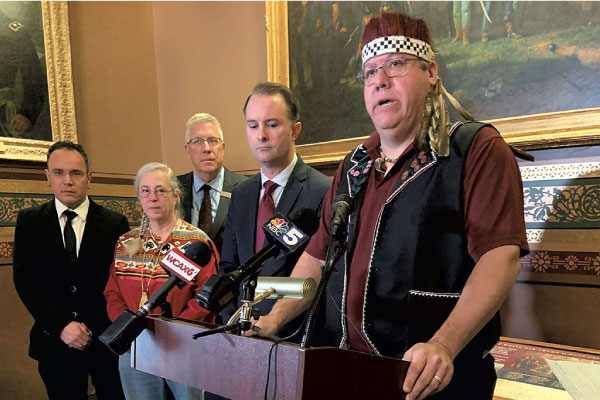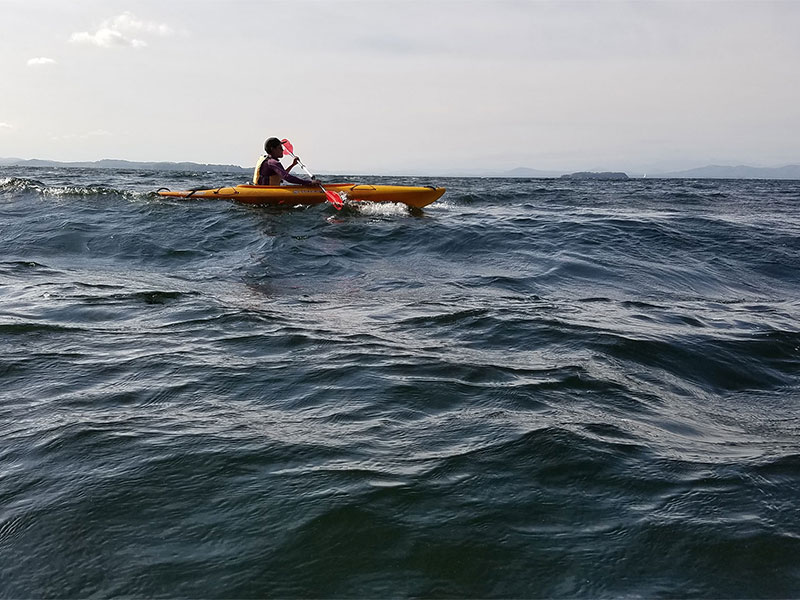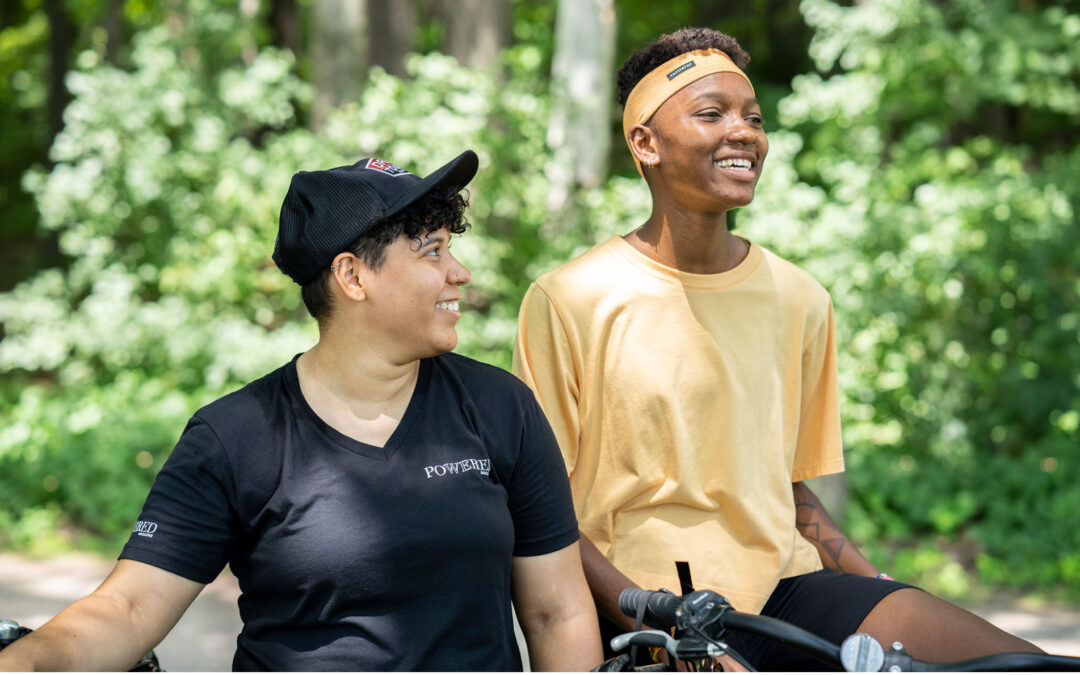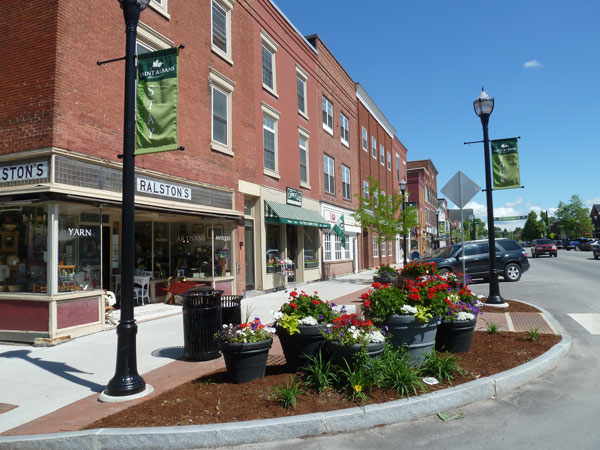By KEN PICARD
Don Stevens stepped to the podium in the Cedar Creek Room of the Vermont Statehouse on February 5 and reasserted the sovereign rights that his people have never ceded: to hunt and fish freely on their ancestral land.
Stevens, 53, is a political activist, artisan, educator, environmentalist and informational technology expert. During the Wednesday morning press conference, he served in yet another role: as chief of the Nulhegan Band of the Coosuk-Abenaki Nation.
Dressed in traditional Abenaki garb — a beaded vest, a bear-claw necklace, a moose-hair headdress dyed red to symbolize the blood of his people, and eagle feathers to carry his prayers to the Creator — Stevens called on state lawmakers to pass H.716. If enacted, the bill would grant free and permanent hunting and fishing licenses to the approximately 6,000 members of Vermont’s four officially recognized Native American tribes.
Flanked by Abenaki tribal elders and state officials, Stevens called the occasion “a really historic day. Where there were adversarial relationships before, we have found a way to get above that and work in partnership, to uplift our people and to acknowledge our rights,” he said.
The Abenaki aren’t asking for special favors or depriving others of their property rights, Stevens asserted. The Vermont Fish & Wildlife Department already issues free hunting and fishing licenses to seniors, veterans and people with disabilities. This legislation would simply add another category of hunters and fishermen who are exempt from state fees — $229 for a five-year combined hunting and fishing license.
Abenaki sportsmen would still need to abide by all fish and wildlife regulations and seasons. The bill is currently under consideration by the House Committee on Natural Resources, Fish and Wildlife.
Virtually no one disputes that the Abenaki hunted and fished the North Country for centuries before the arrival of Europeans. But Stevens, who’s earned a reputation as a politically astute leader and advocate for the Abenaki tribes, argued at the Statehouse that the legislation is good for other Vermonters, too.
A decline in the number of woodland hunters in recent years has made it more difficult for Vermont to manage its deer herd, he noted. Another concern is tourism, which Gov. Phil Scott and other lawmakers hope to boost. Stevens believes enactment of H.716 would attract non-Vermonter tribal citizens — Abenaki territory extends into Massachusetts, New Hampshire and southern Maine — to recreate in the Green Mountain State.
“And guess what? They’d have to have a place to stay and to eat,” Stevens said. “They would bring some revenue in.”
Stevens presented his case with a powerful ally by his side: Vermont Attorney General T.J. Donovan.
“Chief, I’m proud to say I’m with you, and I want to say thank you for asking us to look at the historical record, to look at the law … [and] to acknowledge our history,” Donovan said. He noted that, in his view, the legislation would result in minimal loss of state revenue.
To those who frequent Statehouse press events, this one seemed fairly routine. But its historical significance — an Abenaki chief being introduced and endorsed by Vermont’s top law enforcement officer — wasn’t lost on the indigenous people in the room. Donovan’s predecessor, William Sorrell, who left office in 2017, opposed Abenaki recognition.
“For me here today, this is something that’s come full circle,” said Charles Delaney-Megeso, a 63-year-old Nulhegan tribal elder. He was chair of the Vermont Commission on Native American Affairs in 2011, when the state recognized the Nulhegan and Elnu Abenaki tribes. Recognition of the Abenaki Nation of Missisquoi and the Koasek Traditional Band of the Koas Abenaki came the following year. Stevens was instrumental in moving those petitions through the legislature, too.
It wasn’t the first time the state has recognized the Abenaki. But tribal citizens are hoping to build on such successes, as they did in 2019, when Vermont officially replaced Columbus Day with Indigenous Peoples’ Day. They see Stevens as helping lead that effort.
“The thing about Don is, he works for his own tribe, but he always works for the other three tribes, too. With recognition, he didn’t want to leave any Abenaki behind,” said Roger Longtoe Sheehan, who’s been chief of the Elnu for 25 years. “I don’t think we would be where we are right now if it wasn’t for Don.”
Chief Concerns
In 2010, members of the Nulhegan tribe elected Stevens chief, a position he’ll hold as long as he’s able — and as long as tribal elders want him. Each tribe has its own process of governance — in some tribes, chiefs serve for life — and it’s customary among the Abenaki to make big decisions by consensus. Historically, Abenaki leaders were chosen based on their strengths and the current needs of the tribe. During conflicts, a warrior chief was selected. A tribe negotiating with the Europeans might favor a seasoned negotiator and diplomat.
Stevens’ supporters describe him as a leader in the latter vein, ideally qualified to follow up on the recognition he helped them attain. But Stevens readily acknowledges that he stands on the shoulders of his forebears, who fought long and hard for legitimacy only to see it taken away.
On Thanksgiving Day 1976, then-governor Thomas Salmon granted the Abenaki state recognition, affording members unlimited hunting and fishing rights and creating the Vermont Commission on Native American Affairs. In January 1977, Salmon’s successor, Richard Snelling, rescinded that act, saying that he couldn’t recognize a “sovereign nation within a sovereign state.”
As a result, during the late 1970s and ’80s, hundreds of Abenaki tribal members participated in “fish-ins” on the Missisquoi River, challenging the state to arrest them for fishing without state licenses. Some also removed the Vermont license plates from their vehicles and replaced them with Abenaki versions.
The man behind those acts of civil disobedience was Homer St. Francis of Swanton, the fiery and militant chief of the St. Francis/Sokoki Band of the Abenaki Nation of Missisquoi. Beginning in the 1970s, St. Francis periodically landed the Abenaki in the headlines to remind Vermonters that the state’s indigenous people were still there. He told the New York Times in 1989, after withdrawing his tribe’s application for federal recognition, “We don’t need a government we don’t recognize to tell us we exist.”
St. Francis, who died in 2001, didn’t live to see his own tribe recognized by the state legislature. But the Abenaki citizens who attended the February 5 Statehouse press conference said they felt his presence, even as they acknowledged that the current times call for a different style of leadership.
Delaney-Megeso described St. Francis as a “war chief” who was “a voice in the wilderness when we needed one.” In contrast, he said, Stevens is more of a diplomat and negotiator, adept at navigating the legal and political complexities of Vermont’s dominant culture.
“Do we want to keep fighting? How far is that going to get us?” said Delaney-Megeso, who participated in some of St. Francis’ protests. “To me, we’re better off making … an enemy a friend. That’s what this next generation of leaders, like Don Stevens, is trying to do.”
Others described Stevens as a man who’s as comfortable testifying before a legislative committee as he is drumming and telling Abenaki tales around a fire.
“Don is a wonderful storyteller,” said Eloise Beil, director of collections at the Lake Champlain Maritime Museum, which hosts an annual Abenaki Heritage Weekend in June. “He is very willing to step out and lead community dance circles, so that people who come can participate and not just stand back and watch.”
Beil, who first met Stevens through Vermont’s ballroom dancing community, later served as one of several independent scholars hired by the state to evaluate the Abenaki tribes’ historical documentation before the legislature would consider their petitions.
Stevens, she said, has been collecting the works of Nulhegan artists and artisans for years; he occasionally lends them to the museum for cultural and educational events. In fact, Stevens made several of the Abenaki crafts that currently appear in the “Road to Recognition” display on the first floor of the Statehouse, including a wampum belt and a tobacco pouch. That exhibit, Stevens remarked in an interview several days after the press conference, sits directly across from the official portrait of former governor Howard Dean — who, like Snelling, opposed tribal recognition. “We thought that was kind of funny,” he said.
As for the eagle feathers on his headdress, Stevens sued the U.S. Department of the Interior three years ago for the right to access, possess and wear them. The Nulhegan are now one of the only state-recognized tribes in the country permitted to request feathers from the National Eagle Repository, a division of the U.S. Fish & Wildlife Service that stores and distributes eagle parts for religious and cultural purposes.
“Don has evolved in his role [as chief] because he has a very broad perspective,” Beil said. “He sees the big picture, so he has been acting in a diplomatic role as well as a culture bearer role, and as a leader who is looking after the interests of the Nulhegan people.”
Part of that “big picture” includes getting Vermont’s mainstream institutions to acknowledge the mistakes of the past so they can move forward. In July 2019, Stevens convinced the University of Vermont’s then-president, Thomas Sullivan, to issue a formal apology for the university’s role in the eugenics survey of the early 20th century. That program was aimed at ridding Vermont’s human gene pool of “idiots,” “imbeciles,” “insane persons” and the “feeble-minded” via institutionalization and sterilization. Many of those targeted, including Stevens’ grandmother, were of Abenaki lineage.
Stevens negotiated that apology less than a year after students and faculty successfully petitioned UVM trustees to remove former UVM president Guy W. Bailey’s name from the university’s Bailey-Howe Library. He now hopes to leverage UVM’s apology to get the state to issue one of its own.
“If you rip the Band-Aid off, then people can heal,” Stevens said. “The state hasn’t ripped off that Band-Aid like UVM has.”
To that end, he has been working with Vermont lawmakers on a joint House resolution, J.R.H.7, which would offer an apology and express condolences to those harmed by state-sanctioned eugenics sterilizations.
“If he’s got two bills in the legislature out in public … you know he’s got three or four things he’s working on in the back of his mind,” said Abenaki Elder Roland Bluto, 73, of Milton. “My God, he’s a tireless worker! I’ve never seen someone put so much dedication into something.”
Jeff Benay, director of Indian education for the Missisquoi Valley School District, has worked with the Abenaki people for more than 40 years. Though not Abenaki himself, Benay served seven terms on the Vermont Commission on Native American Affairs and has known virtually every Abenaki chief since the 1970s.
Benay acknowledged that Stevens, who stands six foot three and weighs 285 pounds, can come across as assertive, even imposing. This may explain why several Abenaki citizens contacted for this story declined interview requests. Others cited internal tribal disputes that they preferred not to air in public. Still others, Benay suggested, are inherently distrustful of the media because of negative past coverage of the Abenaki.
While Benay described the Nulhegan chief as someone who is “not going to take shit from anyone,” state officials consider Stevens a nonthreatening Abenaki leader who can speak the language of politics and the law.
“I think Don Stevens has learned how to walk in both worlds,” Benay said. “In 2020, there’s no longer the need to be as confrontational as possible. There are people who want to work with the Abenaki, and Don has learned how to deal with the dominant culture very, very effectively.”
‘Lemons to Lemonade’
In the Abenaki language, the name of the Nulhegan tribe translates as “people of the wooden fish traps who live in the pines who see the first light of day.” Today, the tribe’s territory is more commonly known as the Northeast Kingdom. But Stevens and his wife, Diane, actually reside in a modest suburban home in Shelburne, where he met with Seven Days for an interview.
Stevens works full time as an IT manager for the Counseling Service of Addison County in Middlebury; Diane is a physical therapist based in Colchester. Though they have six children and seven grandchildren in their blended family, they’re now empty nesters.
Which is not to suggest that Stevens has much free time on his hands. His tribal leadership, which is an unpaid position, comes with a range of official and unofficial responsibilities: repatriating tribal bodies for burial, working with Abenaki who’ve run out of food or lost homes or custody of their kids, helping other tribes with their legal battles and pipeline protests, and giving talks at public schools and colleges.
Last year, Stevens worked with Jesse Bowman Bruchac, a fellow Nulhegan citizen, to create a pilot Abenaki language school at Middlebury College, which will hold its first classes this summer. An occasional lecturer in UVM’s Rubenstein School of Environment and Natural Resources, he also participates in Benay’s annual summer program that brings Abenaki high school students to UVM for two days to experience campus life and promote college education. As a storyteller, Stevens focuses on empowering Abenaki students to take pride in their Native heritage.
Such diverse duties regularly occupy Stevens’ evenings and weekends.
“We have an agreement. You can’t take every weekend,” Diane shouted jokingly to her husband from the kitchen.
“She knows how important this work is,” Stevens remarked with a smile. “We’re trying to preserve our culture.”
Stevens grew up in Huntington only vaguely aware of his own Native heritage. His great-great-grandfather, who was also a chief, his great-grandmother and his grandmother were all listed in the eugenics survey. To avoid detection and possible sterilization, Stevens’ grandmother went by three different names during her life. As he explained, it was common in those years for Abenaki people to change their names and ethnicities on birth certificates to conceal their heritage.
Only in hindsight did Stevens discover that many of his family’s customs and practices were of Abenaki origin. As a child, he remembers, he went ice fishing with older relatives who used perch eyes as bait and placed them under their tongues to keep them from freezing.
“You don’t see anyone do that now, because it’s gross, right?” he said with a laugh.
There were other clues, too: His family made mound gardens, gathered specific plants and roots for medicinal uses, crafted flutes out of poplar limbs, and performed ritual thanks after taking an animal in a hunt. His elders never identified these practices as Indian or Abenaki, Stevens clarified. They were simply “how things were done.”
Stevens’ own parents, neither of whom graduated from high school, never encouraged him to explore his Native roots. His mother, in particular, had been taunted by her non-Abenaki relatives for being an Indian.
“Before my mother died,” Stevens said, “I wanted to make sure she was proud of being Native, and Abenaki in particular, and able to dance in the circle.”
Stevens graduated from high school in 1984 and attended Champlain College for a year before joining the army. Following his honorable discharge, he returned to Champlain College, changed majors and earned a computer science degree. He then moved to St. Albans and Enosburgh, where he worked for a customs broker; later, he became an IT specialist at Century Arms in Fairfax.
Beginning in the early 2000s, Stevens started researching his Abenaki heritage in earnest. He spoke to an uncle who was enrolled as a citizen of the Missisquoi Nation, Vermont’s most politically active tribe in the 1970s. Stevens met with tribal elders in the Swanton and Highgate area, read about the history of New England’s tribes, and delved into the historical record of his own family.
Soon Stevens’ interest in his cultural roots extended to indigenous politics. In 2006, then-governor Jim Douglas formally recognized the Abenaki people as a minority-status population within the state. He appointed Stevens to the Vermont Commission on Native American Affairs.
Though the governor’s declaration was a step in the right direction, Stevens said, it did little to help the Abenaki people. In particular, Abenaki artists and artisans still couldn’t sell their wares with an official designation of Native American. The federal Indian Arts and Crafts Act of 1990 makes it illegal to display or sell wares as Native-made unless they’re produced by members of a state- or federally recognized tribe.
Stevens set out to change that. After four years on the commission, he resigned his chairmanship and began working toward state tribal recognition. In 2010, the legislature gave the Abenaki a formal process to follow, which included gathering historical evidence and documentation of their continued presence in Vermont. That record had to be reviewed by independent scholars and historians before it could be voted on by the legislature and signed into law by the governor.
When the Nulhegan tribe petitioned the state for official recognition in 2010, Stevens’ family records from the eugenics survey worked to his benefit.
“I used those records to prove that we never left Vermont,” he explained. “So I turned lemons into lemonade.”
Looking back, Stevens remembers the advice the tribes received from then-senator Vince Illuzzi of Derby: “Come to us united, or don’t come to us at all.” Stevens took that message to heart.
Illuzzi, who’d worked with the Abenaki for years, warned Stevens about some of the obstacles that had stymied earlier tribal-recognition attempts. Chief among them were fears that state recognition was a first step toward federal recognition. This, in turn, was seen as opening the door to casinos, the use of drugs under the guise of Native religion, land grabs, home evictions and unenforceable mortgages.
Sure enough, some lawmakers raised those same concerns in reaction to the Abenaki efforts in 2010 and 2011. As Illuzzi put it, “There was some level of hysteria going on at the time.”
But, Illuzzi said, Stevens deftly allayed most of those fears. The Nulhegan chief, he said, “touched all the bases and smoothed the way to the legislation being enacted by the General Assembly and being signed into law by [then-governor] Peter Shumlin.”
Looking back, Stevens noted the irony of the paranoia that surrounded recognition. Today, he pointed out, Vermont has legalized recreational marijuana. Pending legislation would decriminalize prostitution, legalize psychedelic drugs such as peyote and ayahuasca, and expand state-sponsored gambling offerings to include keno.
“They’re doing everything they were afraid we were going to do!” Stevens said with a chuckle. “But my job is still to educate people and make them not afraid of who we are.”
A Place of Their Own
Unlike many federally recognized tribes, the Vermont Abenaki had no tribal land to call their own when the state recognized them. That changed in 2012, when Stevens was instrumental in finding one.
Though the property isn’t huge — 68 wooded acres in the Northeast Kingdom — “We wanted to prove we could do it,” he said. “Town governments have forests. Why can’t the tribes?”
Using the town forest model, Stevens identified a parcel owned by a private citizen in Barton that sat in a wildlife corridor the Sierra Club was already looking to conserve. Working with the Sierra Club, the Vermont Housing & Conservation Board, and the Vermont Land Trust, Stevens obtained grants and purchased the land for the Nulhegan.
“Because this is ours, no one can kick us off of it,” Stevens said. “Our citizens have a place that is safe, where they can go and do their prayers and we can gather as a group. We can pick up that soil and know that our ancestors walked on that land.”
That purchase is a prime example of Stevens’ inclination to find legal means to get his people what they need without ruffling feathers. Acutely aware of how the Abenaki are perceived by mainstream Vermonters, he doesn’t want to reignite old fears that the tribe is seeking to create a state within a state.
On the Nulhegan tribal website, Stevens has posted copies of all the licenses and easements he’s negotiated to access property owned by private citizens and corporate and governmental entities, including the Green Mountain National Forest, FirstLight Power & Resources, the U.S. Fish & Wildlife Service, and TC Energy of Canada. These permits allow tribal citizens to gather plants for food and traditional medicine, as long as they don’t put them to commercial use.
As Stevens explained, the concept of land ownership was foreign to the Abenaki. Now his citizens are free to gather what they need without impinging on the landowners’ rights.
“If you want to own it, people feel threatened. I’m using our old way of life to not threaten people,” he said. “I don’t have time to chain myself to a bulldozer and get myself arrested to prove I’m an environmentalist. I can find ways to work with people to get them to do the right thing.”
Stevens has a similar view on federal recognition. Though becoming a federally recognized tribe would bring his people some benefits, he said, he doesn’t see it as a priority, mostly because it’s time-consuming and costly. “It’d take $20 million and 20 years,” he said.
Haters and Do-Gooders
Over the years, Stevens has had to navigate some murky waters. Many locals presume to speak on the Abenaki’s behalf — while others deny their legitimacy outright.
In September 2013, five students at Middlebury College vandalized a memorial to victims of the September 11, 2001, terrorist attacks. The vandals tore up 2,977 American flags that had been placed on campus, claiming they were disrespectful to Abenaki burial sites.
Stevens, who had no prior knowledge of the protest, immediately condemned the vandalism, calling it “disgusting.” As he told the Addison County Independent at the time, “Our burial sites honor our warriors and their bravery. Putting flags in the earth to honor bravery would not be disrespectful.”
Nevertheless, Stevens received death threats for months for his perceived involvement in the students’ protest, he said.
In fact, Stevens is a veteran who comes from a family of soldiers. His father served in Korea, and his son, Don III, was a reconnaissance scout in Iraq. When Don III went overseas, Stevens gave him a medallion his father had carried into combat and an Abenaki prayer bundle, which his son hung in his Bradley fighting vehicle.
“Even though they were blown up twice,” Stevens said, “everyone walked away alive and with their limbs.”
Stevens’ son survived the war, he said, “but he didn’t survive life.” Struggling with a combination of traumatic brain injuries and posttraumatic stress disorder, Don III got hooked on opioids; he died of a fentanyl overdose last year at age 33.
Other do-gooders have tried to represent the interests of Vermont’s indigenous people without their knowledge or consent. In October 2017, Burlington activist Albert Petrarca used spray paint to deface the “Everyone Loves a Parade!” mural by the Church Street Marketplace, calling it a “white supremacist symbol” that obliterates “First Nation peoples’ lives and history.”
Rather than wading into an ugly public debate on the mural itself, Stevens took the high ground. In an August 2018 email reply to Petrarca, which he also sent to city officials and the press, Stevens acknowledged public concerns about increasing the visibility of people of color — then firmly reminded the activist that the Abenaki people don’t need him, or anyone else, to speak on their behalf.
“In my opinion, this continued controversy is causing just as much harm to race relations as the actual mural itself. So let’s change the conversation and work on positive outcomes for everyone, shall we?” Stevens wrote. “The community needs to start the healing process to move forward and not keep rubbing the open wound.” Stevens signed his email “Waolowzi,” Abenaki for “Be very well.”
About a year later, local musician Eric Maier used a heavy-duty paint stripper to melt away several faces of people pictured in the mural, further defacing them with pink dollar signs. This time, the city invited Stevens to serve on a committee that will ultimately decide the mural’s fate. Stevens respectfully declined.
“If you change [the mural], people who hate the Abenaki will continue to hate. If you change it, people who like it the way it is will be resentful. If you do nothing, the ignorance continues,” he said. “Where’s the win?”
Instead, Stevens negotiated a memorandum of understanding with Burlington Mayor Miro Weinberger to hold an annual event on Church Street, paid for by the city, that educates the public about the Abenaki people and their culture.
Then, in a parallel move, Stevens approached Gene Richards, director of aviation at Burlington International Airport, and convinced him to give the tribe exhibition space in the terminal for Abenaki artifacts, history and memorabilia. The 25-by-6-foot glass-walled display case on the second floor will remain there for at least five years — though Stevens, who curated the exhibit, hopes it will become permanent. With more than a half million travelers passing through the airport annually, he said, “If even 10 percent see it, that’s huge.”
Nearly a decade after the tribes received state recognition, with all the historical scrutiny that process entailed, some people still challenge the legitimacy of Vermont’s Abenaki, Stevens noted. They include an academic at Saint Mary’s University in Halifax, Nova Scotia, who accuses the tribe of “race-shifting,” or falsely claiming an indigenous heritage.
Asked about those claims, Stevens just shook his head. Native Americans, he said, are the only minority in the United States who need to carry an official identification card to prove their ethnicity. Unlike some tribes, the Abenaki don’t use DNA or “blood quantum” tests to determine whether someone has enough “Indian blood” to qualify for tribal citizenship.
“The only three things that have to have pedigrees in this country are dogs, horses and Indians,” he said. “Think about that.”
But Stevens said he prefers not to focus on the haters — or to play the victim card.
“As a minority, you have to rise above that,” he said. “So we take a bad situation and use it … to change things for the better.”
This story by Ken Picard with Seven Days originally appeared at https://www.sevendaysvt.com/vermont/chief-don-stevens-represents-a-new-era-of-abenaki-leadership-in-vermont/Content?oid=29751810 .




